Not sure what’s working in your business—or why certain goals haven’t been met? A gap analysis helps you compare where you are now to where you want to be, so you can pinpoint what’s missing and why. With the right gap analysis tools, you can uncover performance issues, missed opportunities, and the best steps to close the gap.
In this guide, you’ll find 8 essential tools and and templates to run an effective gap assessment from start to finish. Scroll down to find out,
Gap Analysis Tools
Once you have identifies what the gaps are, you need to look into why they exist and what you can do about them. There are a few gap analysis models you can use for this task. Following we have listed a few Gap analysis techniques that you can use.
1. SWOT
SWOT analysis focuses on Strengths and Weaknesses in the internal environment and Opportunities and Threats in the external environment. It helps you determine where you stand within your industry or market.
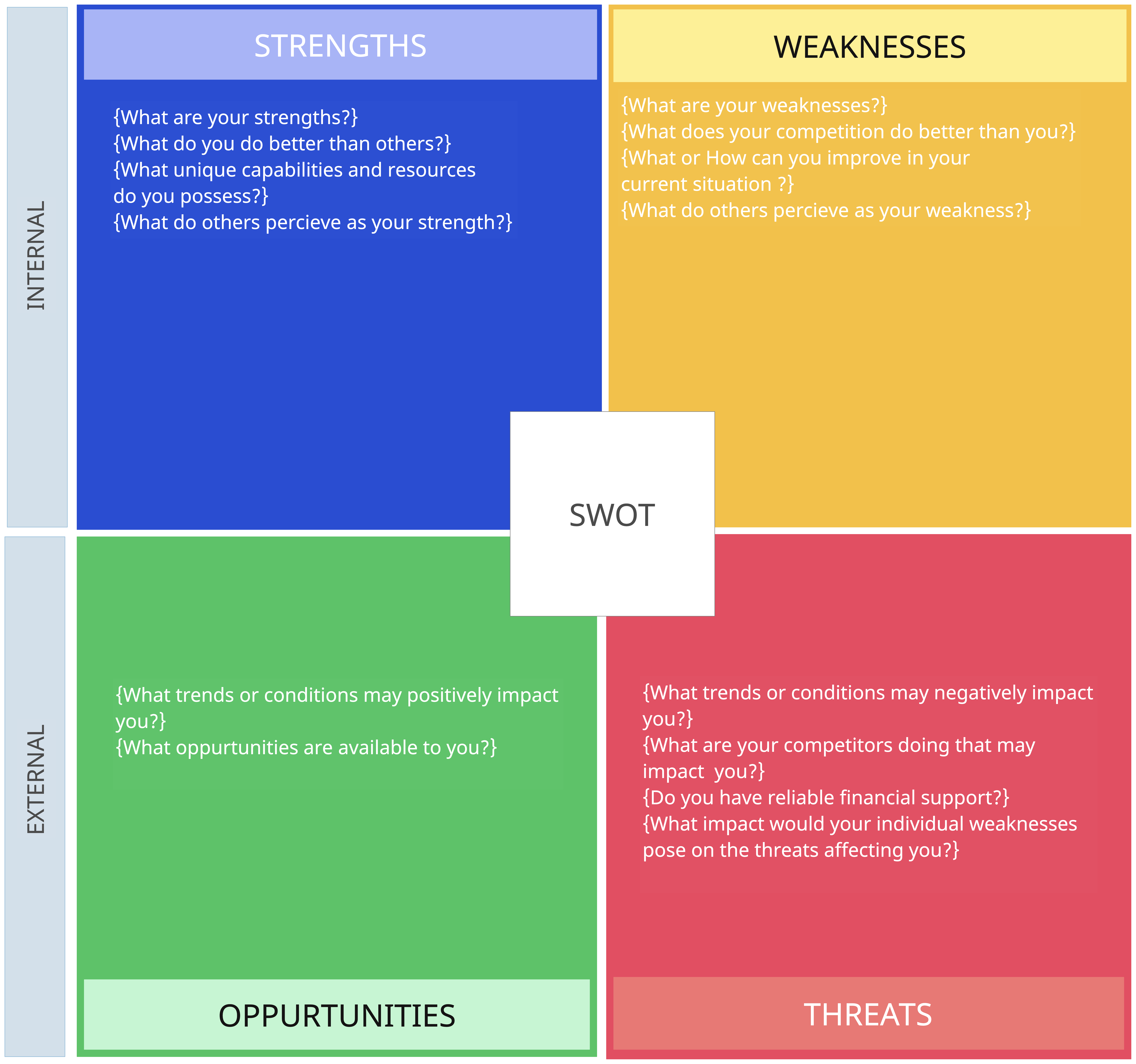
How to do it;
- Gather around a team from relevant teams/ departments
- Create a SWOT analysis matrix; you can either use the one below or choose from these SWOT analysis examples
- List down the internal strengths and weaknesses of your business
- Note down the opportunities and threats present in the industry/ market
- Rearrange each bullet point in the order of highest priority at the top, and lowest at the bottom
- Analyze how you can use your strengths to minimize weaknesses and fight off threats, and how you can use the opportunities to avoid threats and get rid of weaknesses
Use Creately’s AI SWOT analysis template to generate a tailored SWOT matrix instantly, with AI suggestions to help identify key factors and insights faster.
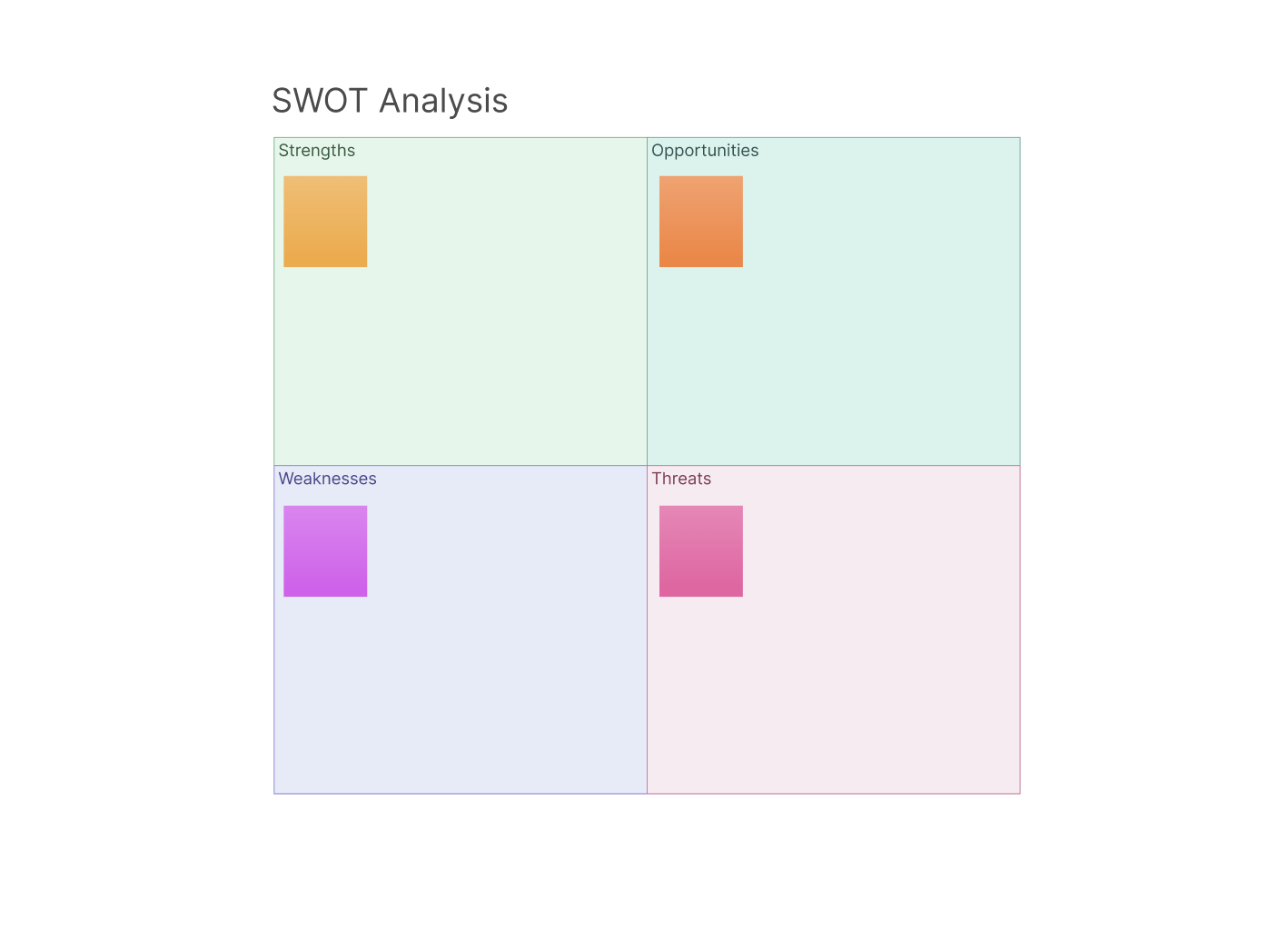
2. Fishbone
A fishbone diagram, also known as a cause and effect diagram or Ishikawa diagram, helps you identify the root cause of an issue or effect. It lists the 6 Ms (listed in the diagram below) and helps you see how they relate to the central problem.
How to do it;
- Write the main issue at the “head” of the diagram (the right side).
- Draw the spine – A horizontal line pointing to the problem.
- Add branches for categories. Use the 6 Ms (Manpower, Methods, Machines, Materials, Measurements, and Mother Nature/Environment) or categories relevant to your context.
- Brainstorm causes. Under each category, list specific possible causes that may contribute to the problem.
- Work with your team to identify which causes are most likely at the root.
Get more fishbone diagram examples.
3. McKinsey 7S
McKinsey 7S can help you with any of the following purposes
- To help understand the gaps that may appear in the business
- Identify which areas to optimize to boost business performance
- Align processes and departments during a merger or acquisition
- Examine the results of future changes within the business
The 7s refer to key interrelated elements of an organization. They are as follow,

These elements are divided into two groups: hard elements, which are tangible as they can be controlled, and soft elements, which are intangible as they cannot be controlled.
Hard elements
- Strategy – the plan of action that will help your business gain a competitive advantage
- Structure – the organizational structure
- Systems – business and technical infrastructure that employees use to do their daily tasks
Soft elements
- Shared values – a set of beliefs or traits that the organization upholds
- Style – the leadership style of the organization and the culture of interaction
- Staff – the general staff
- Skills – key skills of employees
How to apply it;
- Gather around a competent team
- Check whether the elements are properly aligned with each other (look for gaps and weaknesses in the relationship between the elements)
- Define the state where these elements would be optimally aligned
- Come up with an action plan to realign the elements
- Implement the changes and continuously review the 7s, moving forward
Here’s a more detailed look at how to apply the McKinsey 7s model.
4. Nadler-Tushman’s Congruence Model
Nadler-Tushman’s congruence model is used to identify performance gaps within an organization.
It is based on the principle that a business’s performance is a result of these 4 elements: work, people, structure, and culture. The higher the compatibility among these elements, the greater the performance will be.
How to apply it;
- Gather all data that points to the symptoms of poor performance
- Specify and analyze inputs that include the environment, resources, and history. And define your organization’s strategy.
- Identify which outputs are required at the individual, group, and organizational levels to meet the strategic objectives
- Figure out the gaps between desired and actual output and the problems associated with it (and mark down the costs associated with them as well)
- Collect data on and describe the basic nature of the 4 major components of the organization
- Assess the degree of congruence among these components
- See how poor congruence and problems related to outputs are correlated. Check if the poor ‘fit’ of the 4 major components is related to the problems
- Come up with action steps to deal with the problem causes
Check out this resource for more in-depth instructions on how to apply the Congruence model.
5. Burke-Litwin Causal Model
This gap assessment tool helps you understand how the different components of an organization relate to each other when going through a period of change. There are 12 components that are interrelated and they are as follows,
How to apply it:
- Find out where the need for change is coming from; whether from the external environment, transformational factors, etc.
- Identify which of the elements in each group is responsible for the situation
- Examine the key element along with the other 11 elements; pay special attention to those that are closely linked to the identified element
- Figure out the changes you need to make to the main element, along with the other few elements it is closely linked to
Learn more about the 12 drivers of change, the Burke-Litwin highlights here.
6. PEST or PESTLE Analysis
PEST or PESTLE analysis is a strategic tool used to evaluate external factors that can affect an organization. It helps compare how well your current strategies align with external trends. Gaps are often found where the business is unprepared for external shifts (e.g., regulatory changes, economic downturns).
- PEST stands for Political, Economic, Social, and Technological factors.
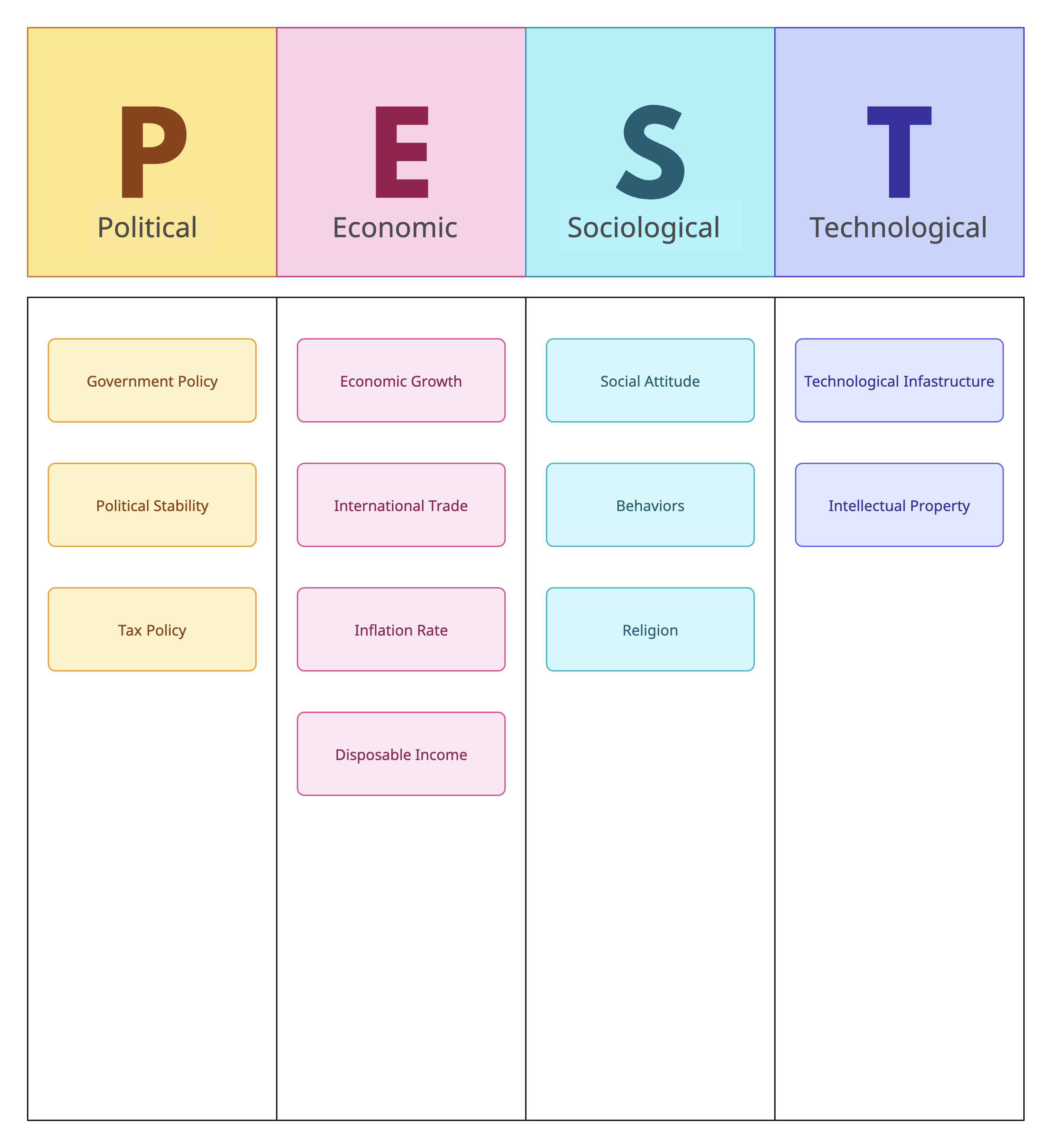
Use the AI PEST analysis template to quickly generate a structured analysis with key prompts and editable sections tailored to your focus area.

- PESTLE adds Legal and Environmental to the mix.
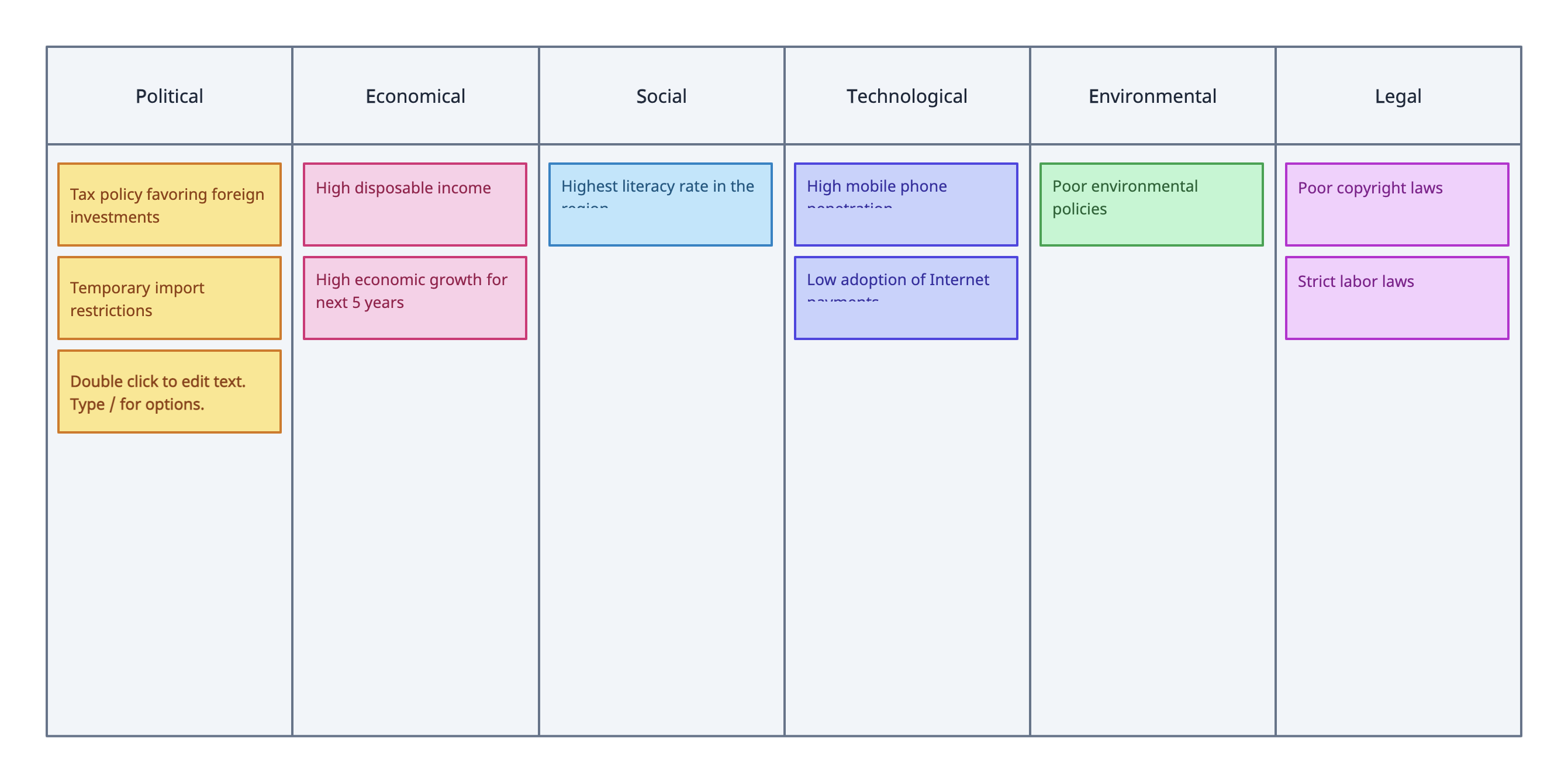
Explore the AI PESTLE analysis template to map out trends, risks, and potential disruptions in each category.

How to apply it:
- Identify the external environment you’re analyzing (e.g., a specific market, country, or region).
- Under each category (Political, Economic, etc.), list factors that could impact your business goals.
- Assess how each factor affects your current operations versus your desired future state.
- Use the insights to pinpoint external gaps and risks in your strategy or planning.
7. Benchmarking
Benchmarking is the process of comparing your business performance, processes, or metrics against industry best practices or top competitors to identify gaps. Benchmarking reveals where you’re underperforming and helps prioritize improvement areas based on what competitors or top performers are doing better.
How to apply it:
- Select the process or metric you want to benchmark (e.g., customer service response time).
- Identify industry leaders or standards to compare against.
- Collect data on your current performance and that of the benchmarked entities.
- Analyze the differences and determine why the gap exists.
- Develop strategies to close the performance gap.
8. Porter’s Five Forces
Porter’s Five Forces is a framework for analyzing the competitive forces in an industry to determine its attractiveness and identify strategic gaps. It helps identify gaps in competitive strategy, like areas where your offering is weak compared to rivals, or where new entrants could disrupt your market.
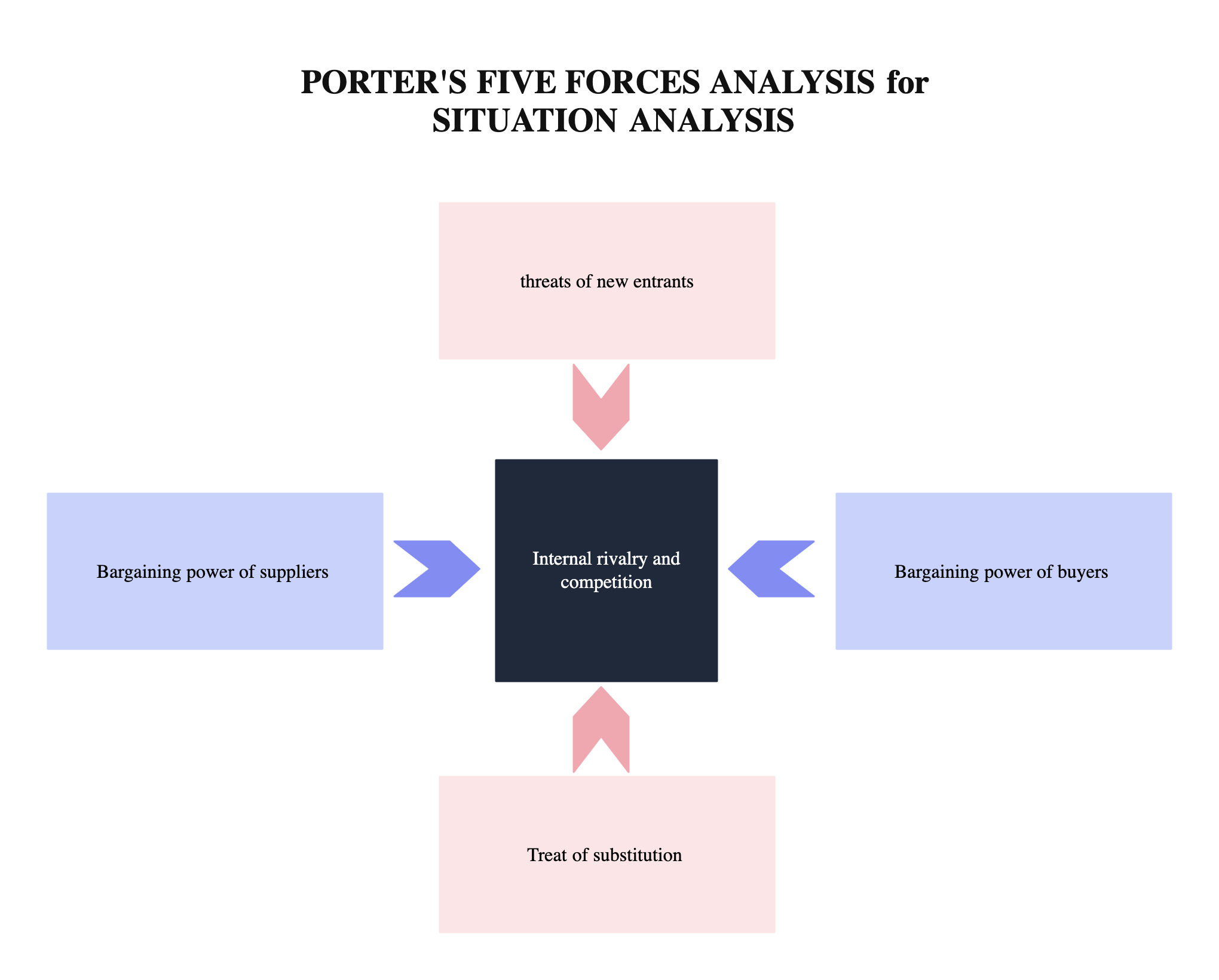
The five forces are:
- Competitive Rivalry
- Threat of New Entrants
- Bargaining Power of Suppliers
- Bargaining Power of Buyers
- Threat of Substitute Products or Services
How to apply it:
- Evaluate each of the five forces in the context of your industry.
- Assess how each force impacts your market position.
- Identify weaknesses or threats—such as strong buyer power or high competition—that create strategic vulnerabilities.
- Use this analysis to understand where you need to build competitive strength.
Using AI for Conducting Your Gap Analysis
The AI gap analysis template in Creately uses the power of Creately AI, to simplify the entire process. Just input your current state, goals, or performance data, and the AI will generate a visual analysis highlighting key gaps and suggested actions.
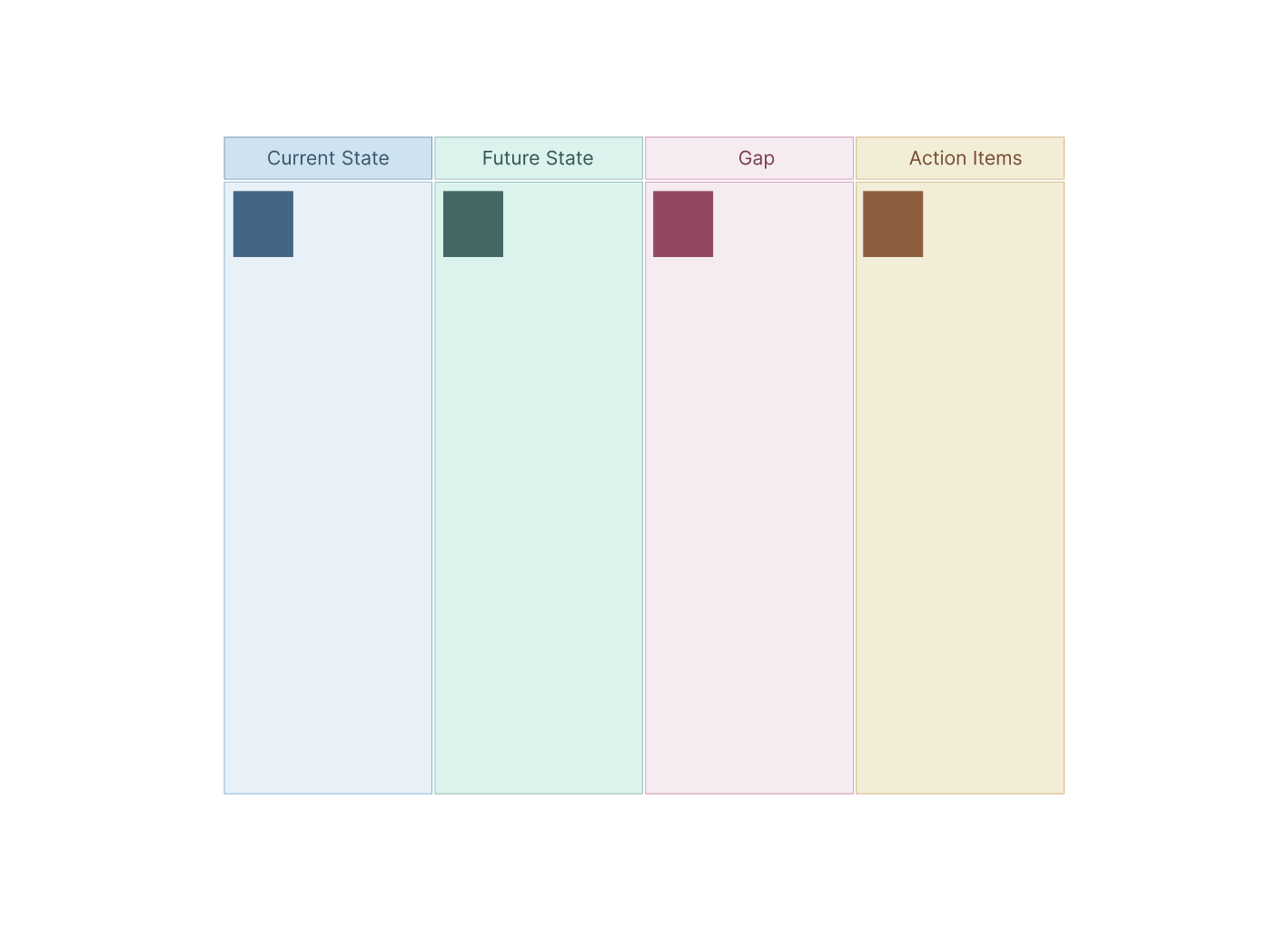
How it works:
Step 1. Select the AI gap analysis template from the template library.
Step 2. Enter your inputs: current performance, goals, or specific challenges.
Step 3. Let the AI generate the gap map, complete with labeled stages, connections, and action points.
Step 4: Customize the output and collaborate with your team to refine and implement solutions.
This template is ideal for teams looking to save time, reduce manual effort, and make faster, data-driven decisions across areas like strategy, operations, HR, and marketing.
What’s Your Take on Gap Analysis Tools?
Gap analysis is a great way to figure out the parameters of your next project or your process improvement efforts. We’ve covered 5 types of Gap analysis tools that you can use to identify gaps in your business and determine what you should do next.
Let us know what other Gap analysis tools you use during a Gap analysis process at your organization.
And if you are looking for Gap analysis templates, we’ve got you covered! Check out this compilation of useful Gap analysis templates that you can use for multiple scenarios



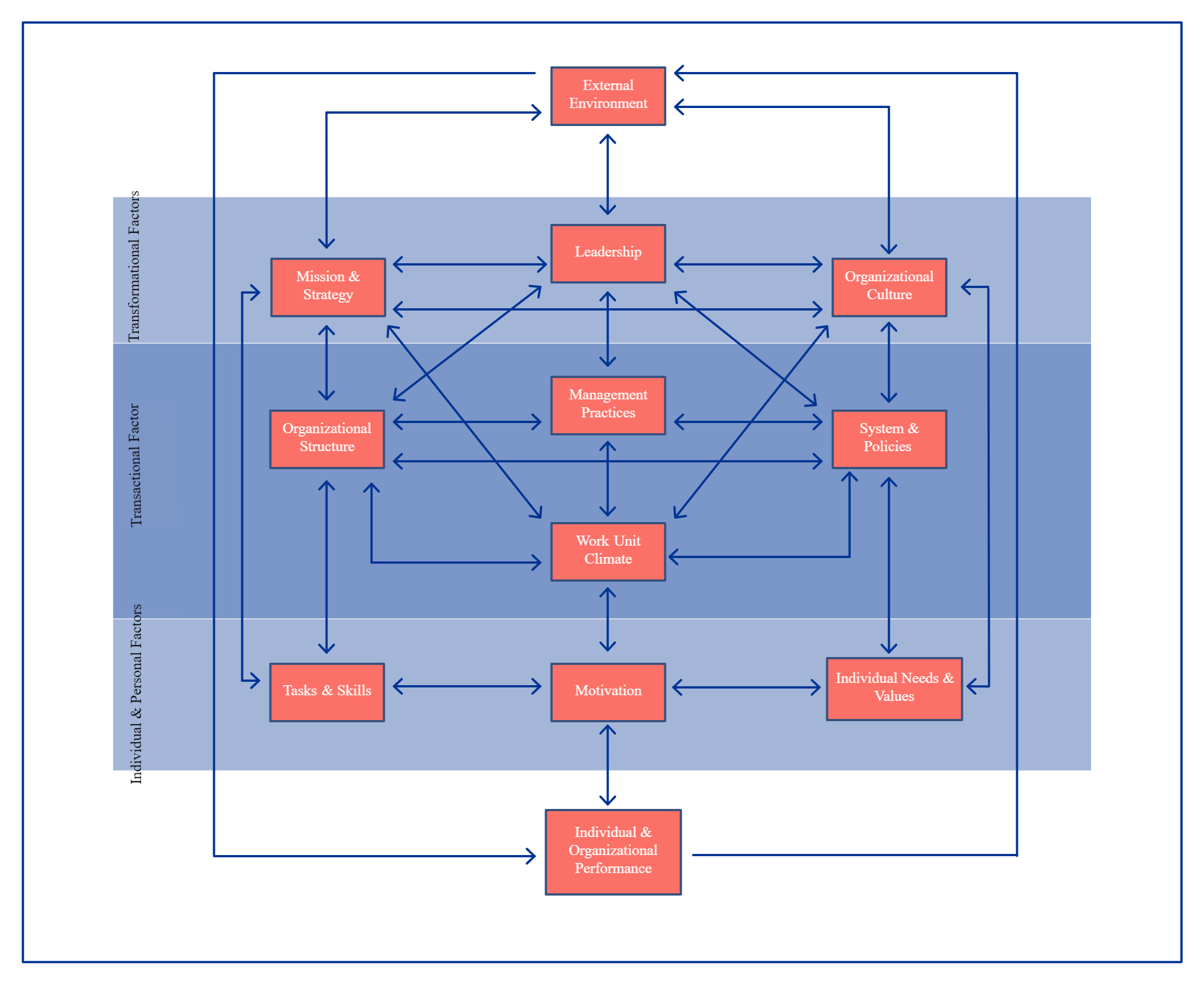

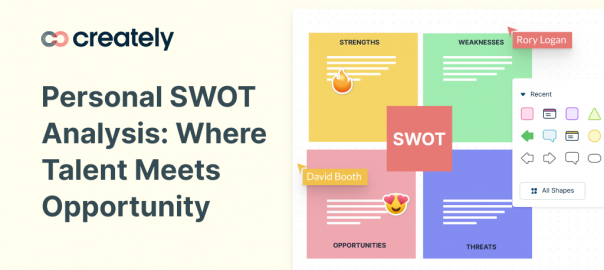

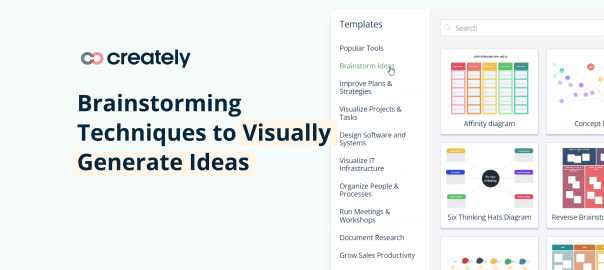

I know about the SWOT and Fishbone. I did not know about the other three tools. I really needed this information for my project. Thank you for writing this article.
Excellent piece of work. I learnt alot from this